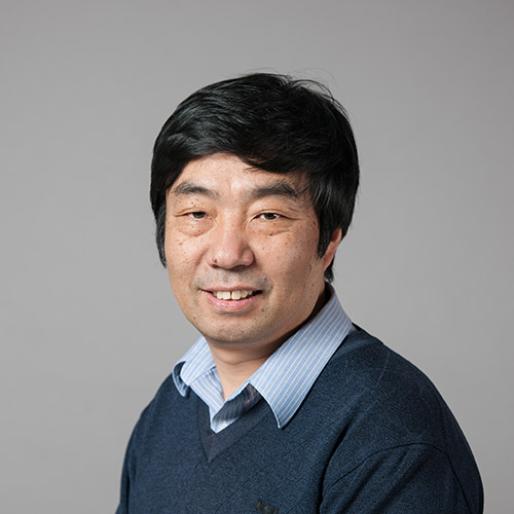The big picture: using wildflower strips for pest control
Scientists in Devon have simulated the intricate workings of a livestock farm, accurately mimicking grass growth, the amount of beef and lamb it produces, and the greenhouse gas emissions of its animals.
Writing in the journal Agricultural Systems, the team from Rothamsted Research say the model can be used to predict what impact proposed changes to farming practices, such as different animal breeds or forage plant species, will have.
Their computer simulation accurately recreates the journey of carbon, nitrogen and other climate affecting chemicals as they pass from the soil, through vegetation into grazing animals – and back out again into the environment.
Lead author Dr Lianhai Wu said: “Our computer model accurately predicts animal and grass growth, greenhouse gas emissions, as well as nutrient and water cycling by taking into account the effects of factors such as livestock breed, climate, soil types and feed quality and quantity.
“The model could potentially integrate economic, environmental and social factors as well to provide decision makers with the ability to forecast, interpret and respond to potential threats or opportunities for UK livestock farmers.”
The model is based on data from Rothamsted’s experimental livestock farm near Okehampton. The North Wyke Farm Platform or ‘farm lab’ is the most instrumented in the world, where a variety of sensors and other apparatus have been measuring nutrients as they pass through the farm over the last decade.
Every key macro nutrient is accounted for, whether it is in the soil, vegetation or animal – and also how much is lost as pollution into rivers or the atmosphere.
Simulated animal growth from the model was validated using liveweight data from over 200 beef cattle and 900 lambs collected from the ‘farm lab’ between 2011 and 2018.
The model showed significant differences in growth rate, carbon dioxide and methane emissions between different sheep breeds, but less differences between the cattle breeds.

Dr Wu said: “We are at a critical juncture for global livestock production as we face competing requirements for maximal productivity on one hand and minimal pollution on the other. Ruminants make an important contribution to global food security by converting feed that is unsuitable for human consumption into high value food protein, demand for which is currently increasing at an unprecedented rate because of increasing global population and income levels.”
Reduction in red meat and dairy intake is increasingly seen as a pathway to improving human and environmental health, but globally, ruminant livestock will be important for the foreseeable future and finding ways to make production sustainable are being urgently sought, say the team.
“As a consequence, there is a call to ‘redesign’ livestock systems, including the integration of both crops and livestock. These more complex systems can be developed and analysed using models such as this one that can predict system responses to environment and management, without the need for lengthy real-world experiments,” says Dr Wu.
Although the model was validated with data specific to Southwest England and for a permanent pasture grazing system, the model has clear potential to explore more innovative practices to maintain or increase livestock production whilst reducing adverse environment impacts across different livestock breeds, climates and soil types, he added.
“Factors affecting production efficiency, product quality, and consumer acceptability, such as animal fertility, health and welfare, will ultimately define the sustainability – and future - of ruminant production systems.”

Systems Modeller

Farming Footprints and Adaptations Team Leader

Biogeochemist
Rothamsted Research is the longest-running agricultural research institute in the world. We work from gene to field with a proud history of ground-breaking
discoveries in areas as diverse as crop management, statistical interpretation and soil health. Our founders, in 1843, were the pioneers of modern
agriculture, and we are known for our imaginative science and our collaborative approach to developing innovative farm practice.
Through independent research, we make significant contributions to improving agri-food systems in the UK and internationally, with
economic impact estimated to exceed £3 bn in annual contribution to the UK economy. Our strength lies in our systems approach, which combines strategic research,
interdisciplinary teams and multiple partnerships.
Rothamsted is home to three unique National Bioscience Research Infrastructures which are open to researchers from all over the world:
The Long-Term Experiments,
Rothamsted Insect Survey and the
North Wyke Farm Platform.
We are strategically funded by the Biotechnology and Biological Sciences Research Council (BBSRC), with additional support from other national and
international funding streams, and from industry. We are also supported by the Lawes Agricultural Trust (LAT).
The Biotechnology and Biological Sciences Research Council is part of UK Research and Innovation, a non-departmental public body funded by a grant-in-aid
from the UK government.
BBSRC invests to push back the frontiers of biology and deliver a healthy, prosperous and sustainable future. Through our investments, we build and support a vibrant,
dynamic and inclusive community which delivers ground-breaking discoveries and develops bio-based solutions that contribute to tackling global challenges,
such as sustainable food production, climate change, and healthy ageing.
As part of UK Research and Innovation (UKRI), we not only play a pivotal role in fostering connections that enable the UK’s world-class research and innovation system
to flourish – we also have a responsibility to enable the creation of a research culture that is diverse, resilient, and engaged.
BBSRC proudly forges interdisciplinary collaborations where excellent bioscience has a fundamental role. We pioneer approaches that enhance the equality, diversity,
and inclusion of talent by investing in people, infrastructure, technologies, and partnerships on a global scale.
The Lawes Agricultural Trust, established in 1889 by Sir John Bennet Lawes, supports Rothamsted Research’s national and international agricultural science through the provision of land, facilities and funding. LAT, a charitable trust, owns the estates at Harpenden and Broom's Barn, including many of the buildings used by Rothamsted Research. LAT provides an annual research grant to the Director, accommodation for nearly 200 people, and support for fellowships for young scientists from developing countries. LAT also makes capital grants to help modernise facilities at Rothamsted, or invests in new buildings.